Processi sostenibili nella riabilitazione degli spazi costruiti
Abstract
I risultati di attività ricognitive e sperimentali sul sistema ambientale della fiumara Calopinace a Reggio Calabria, hanno implementato la discussione sulla possibile formazione di codici d’intervento sull’esistente, nel tentativo di voler promuovere un insieme di segni progettuali sorti sulle tracce delle identità riconosciute nei luoghi di osservazione, secondo regole di rilevamento e selezione delle peculiarità dei diversi casi esaminati. La sperimentazione è caratterizzata da due classi di obiettivi riguardanti i processi di rigenerazione urbana e la riabilitazione funzionale e tecnologica di organismi edilizi.
Intenzione primaria è quella di porre a fondamento, il recupero di una dimensione partecipativa, tra uomo e territorio, attraverso la realizzazione di una serie di interventi che evidenziano i caratteri del luogo, le vocazioni intrinseche, favorendo una rivitalizzazione che possa far percepire il “luogo fiumara”, non più come segno di rottura, ma come elemento di unione tra costruito, infrastruttura e spazi naturali.
I progetti attraverso una lettura del territorio nel passaggio tra paesaggio e architettura-infrastruttura, danno vita ad uno spazio tra costruito e natura. Il criterio-guida della sperimentazione è quello di una integrazione con le caratteristiche ambientali complessive delle aree-studio, soprattutto nella ricerca di indicatori del processo di una perseguibile sostenibilità del costruito, per riqualificare e restituire qualità agli spazi di interazione, anche sociale, nella conservazione dell’identità culturale e del senso di appartenenza al territorio, utilizzando materiali eco-compatibili.
Sustainable Processes in Built Spaces’ Rehabilitation
The result of recognitive and experimental activities on the environmental system of Calopinace torrent in Reggio Calabria, have implemented the debate on the possible formation of codes of intervention on the existing, in an attempt of promoting a set of project signs aroused on the trails of identity recognized in the places of observation. The experiment is characterised by two classes of targets relating to the processes of regeneration of urbanisation and functional and technological rehabilitation of building structures, in the project definition of the specific characteristics of an architecture object and its collocation, with the formation of its architectural and material elements.
The primary intention is to lay the foundation, the recovery of a participatory dimension, between man and land, through the creation of a series of interventions that highlight the characteristics of the place, the intrinsic vocations, promoting social and revitalization of group that can make perceive “place torrent", not as a sign of strength, but as a link between built infrastructure and natural spaces.
The projects through a reading of the territory in the transition between landscape and architecture-infrastructure, create a space between buildings and nature. The guiding principle of the experiment is that of a integration with the environmental characteristics of the study-areas, especially in the search for indicators of the process of an actionable sustainability of the built environment, to redevelop and restore quality to the spaces of interaction, also social, preservation of cultural identity and sense of belonging to the land, in environmental protection and recovery of the existing codes, using eco-friendly materials.
Parole chiave
Full Text
PDFDOI: https://doi.org/10.14633/AHR172
Refback
- Non ci sono refbacks, per ora.
Copyright (c) 2019 Giuseppina Foti

This work is licensed under a Creative Commons Attribution-NonCommercial 4.0 International License.
........................................................................................................................................................................................................................................................................................................................................................
ArcHistoR è una rivista open access e peer reviewed (double blind), di Storia dell’architettura e Restauro, pubblicata dall’Università Mediterranea di Reggio Calabria. La rivista ha cadenza semestrale. È una rivista di Classe A (ANVUR) per l’Area 08 - Ingegneria civile ed Architettura, settori C1, D1, E1, E2, F1.
Comitato scientifico internazionale
Maria Dolores Antigüedad del Castillo-Olivares (Universidad Nacional de Educación a Distancia de España), Monica Butzek (Kunsthistorisches Institut in Florenz), Jean-François Cabestan (Université Paris 1 - Panthéon Sorbonne), Alicia Cámara Muñoz (Universidad Nacional de Educación a Distancia de España), David Friedman (Massachussets Institute of Technology), Alexandre Gady (Université Paris-IV-Sorbonne), Jörg Garms (Universität Wien), Miles Glenndinning (Scottish Centre for Conservation Studies, University of Edinburgh), Mark Wilson Jones (University of Bath), Loughlin Kealy (University College Dublin), Paulo Lourenço (Department of Civil Engineering, University of Minho), David Marshall (University of Melbourne), Werner Oechslin (ETH, Zurich, Stiftung Bibliothek Werner Oechslin, Einsiedeln), José Luis Sancho (Dirección de Conservación de Bienes Histórico-Artísticos, Palacio Real, Madrid), Dmitrij O. Švidkovskij (Moscow Architectural Institute, MARCHI)
Comitato direttivo
Tommaso Manfredi (direttore responsabile), Giuseppina Scamardì (direttore editoriale), Antonello Alici, Salvatore Di Liello, Fabrizio Di Marco, Paolo Faccio, Mariacristina Giambruno, Bruno Mussari, Annunziata Maria Oteri, Francesca Passalacqua, Edoardo Piccoli, Renata Prescia, Nino Sulfaro, Fabio Todesco, Guglielmo Villa
........................................................................................................................................................................................................................................................................................................................................................
Laboratorio CROSS. Storia dell'architettura e Restauro

ISSN 2384-8898

This work is licensed under a Creative Commons Attribution-NonCommercial 2.0 Generic License.

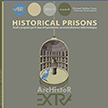
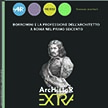
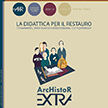
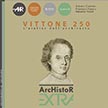
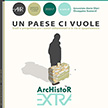
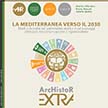
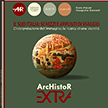
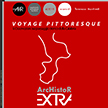
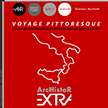
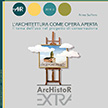
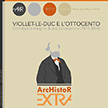

_2.jpg)



